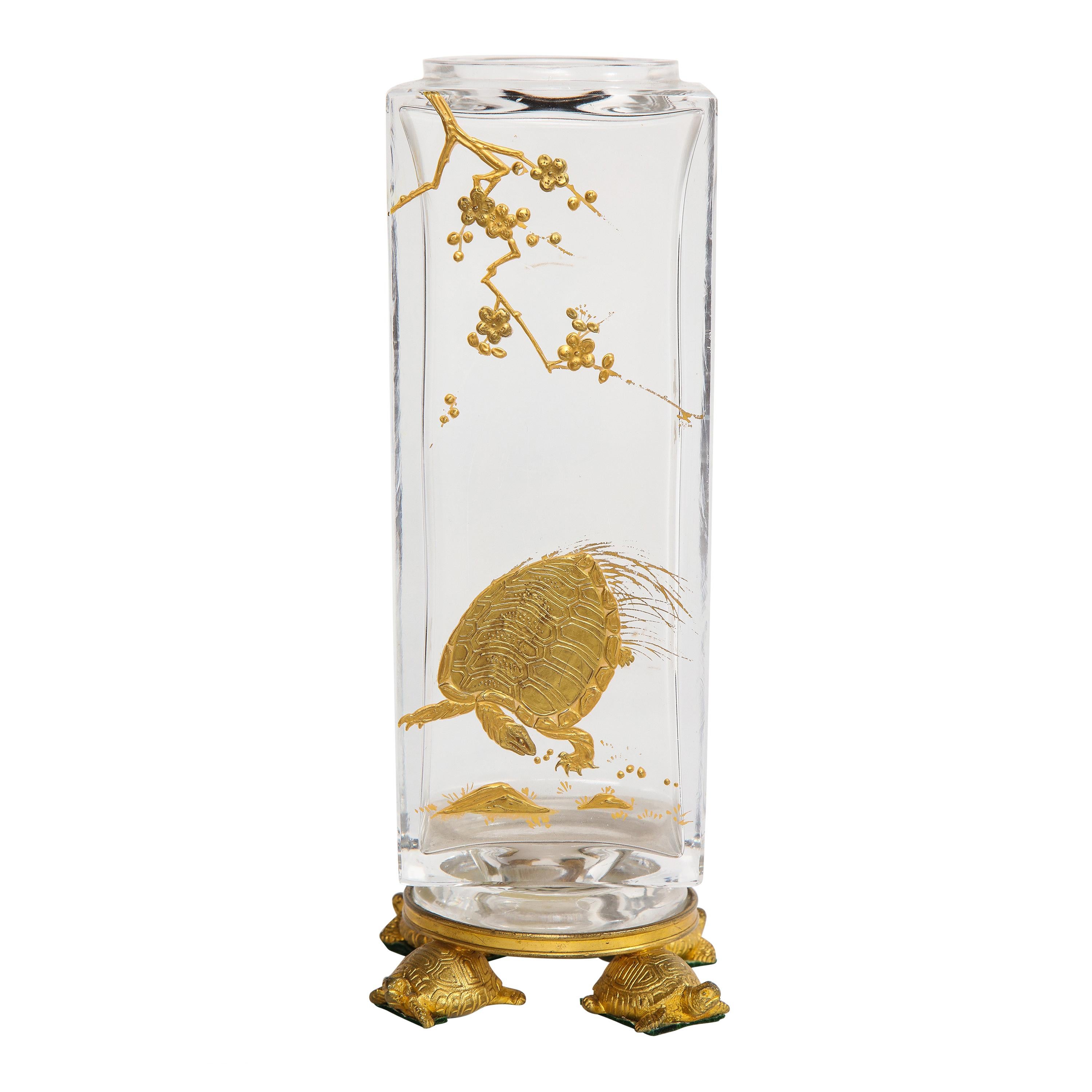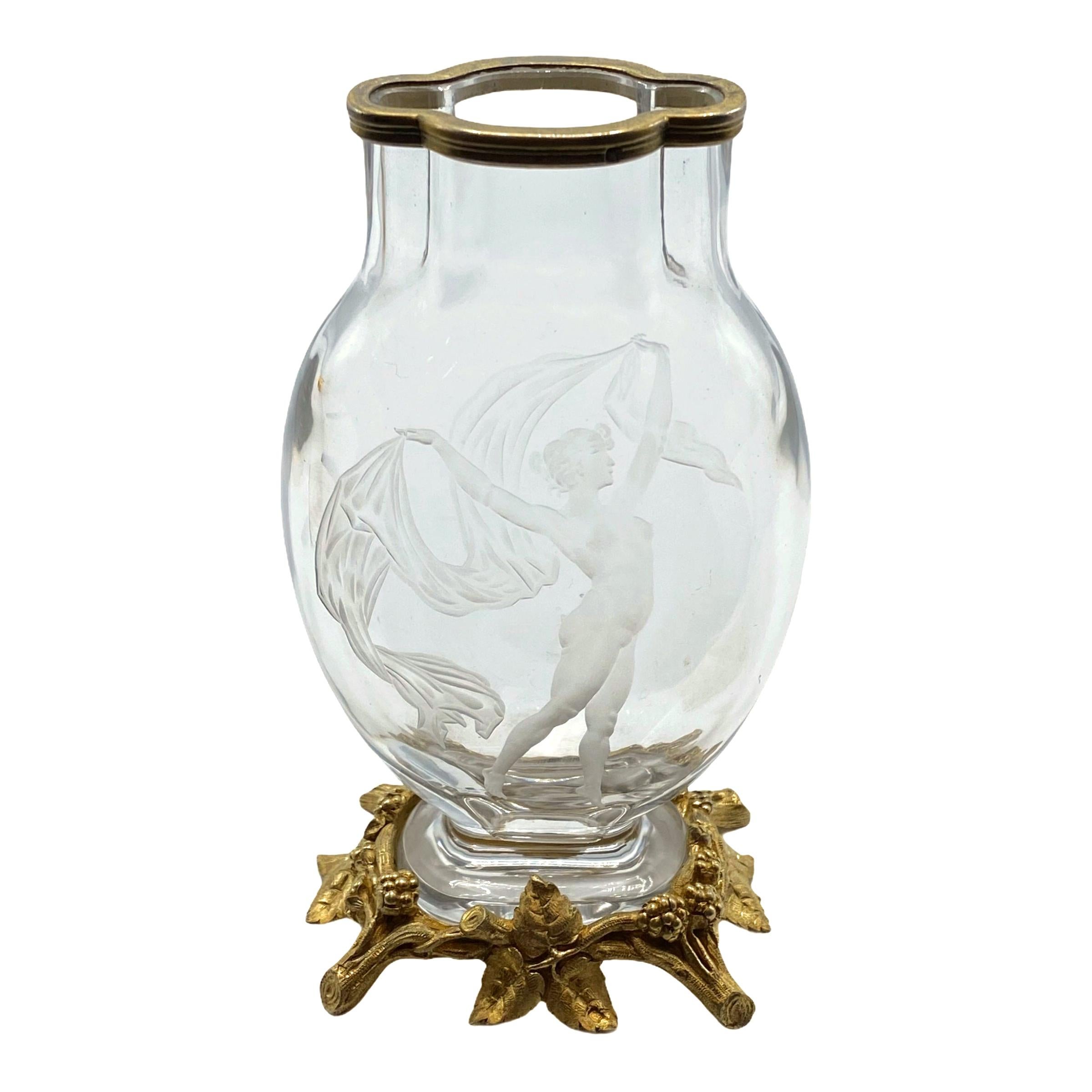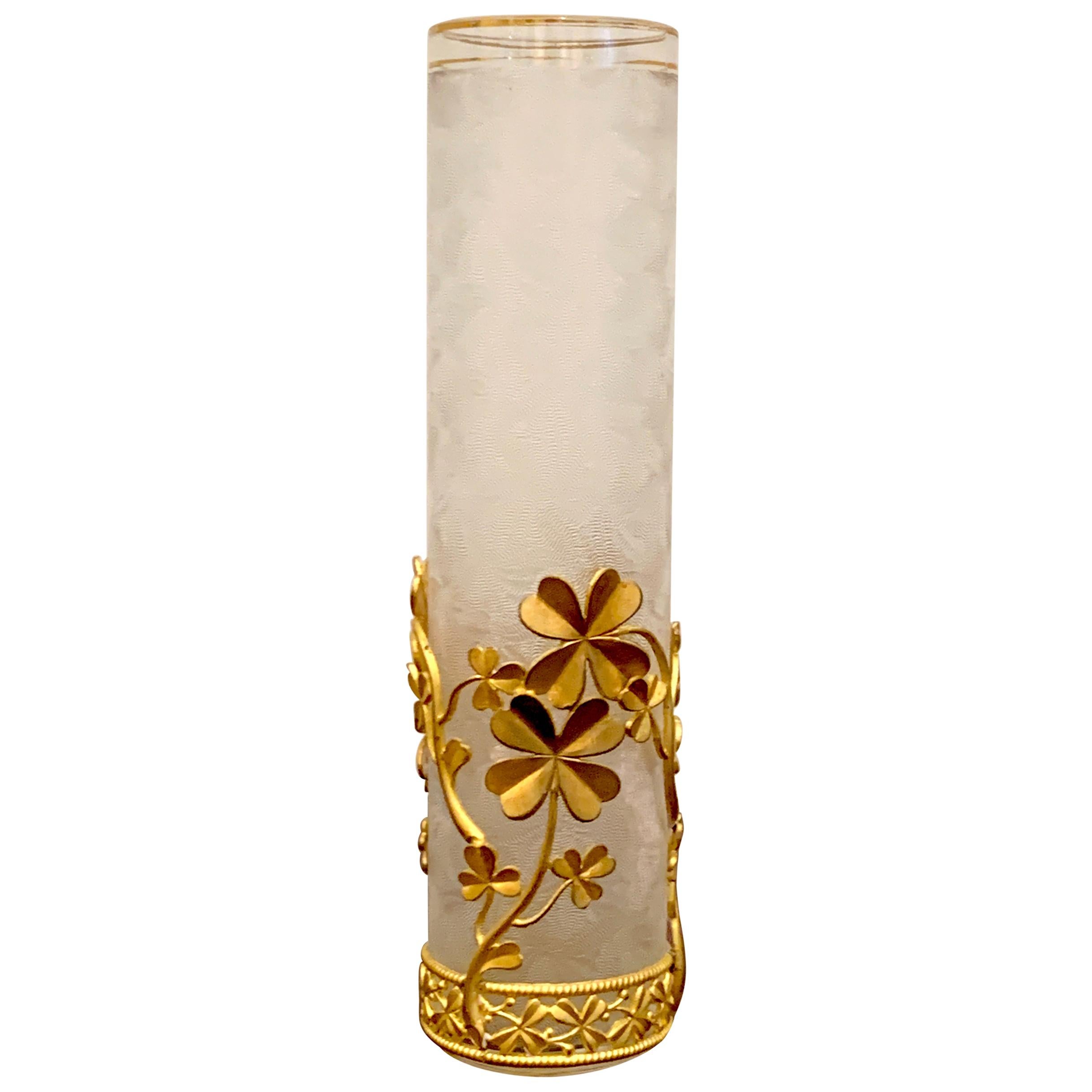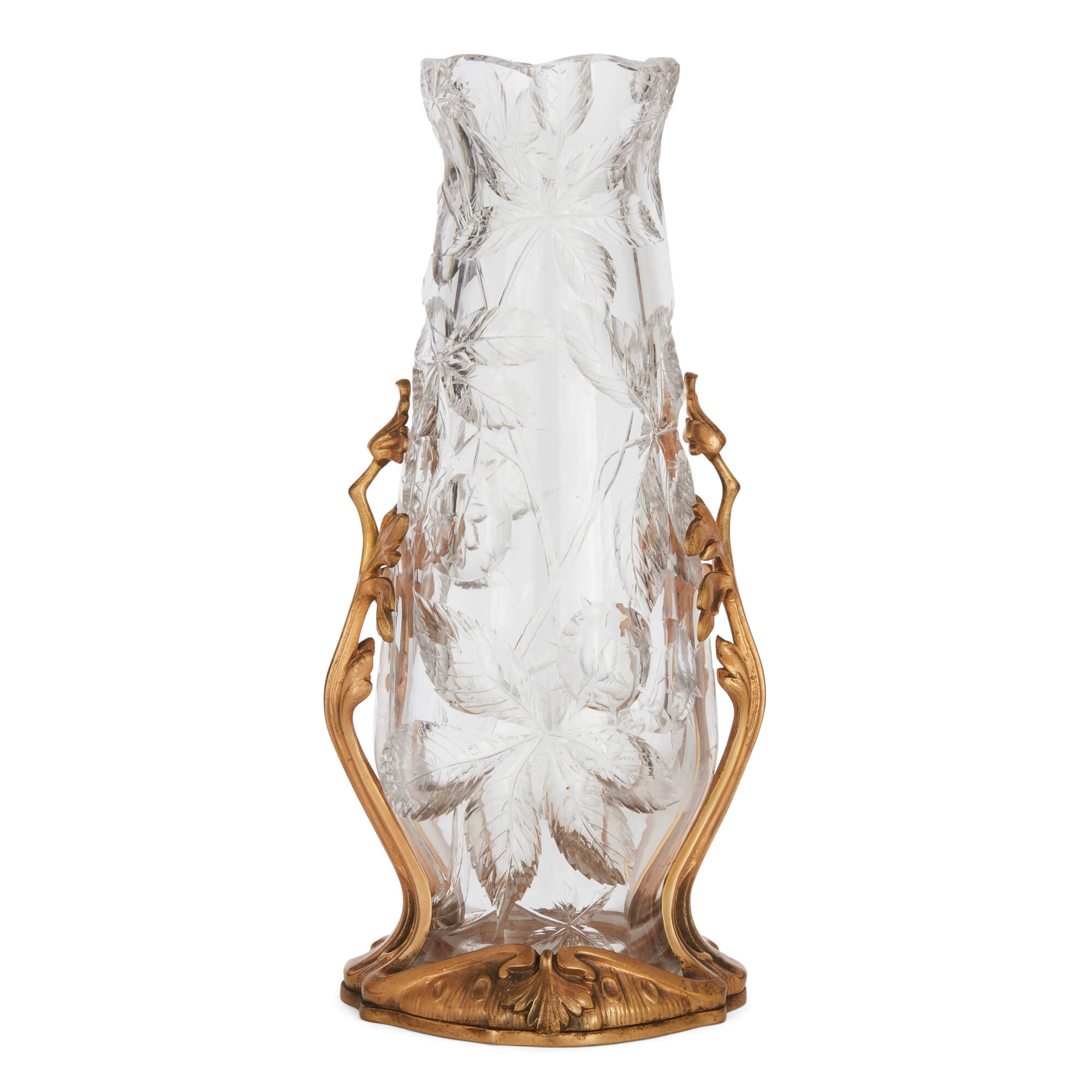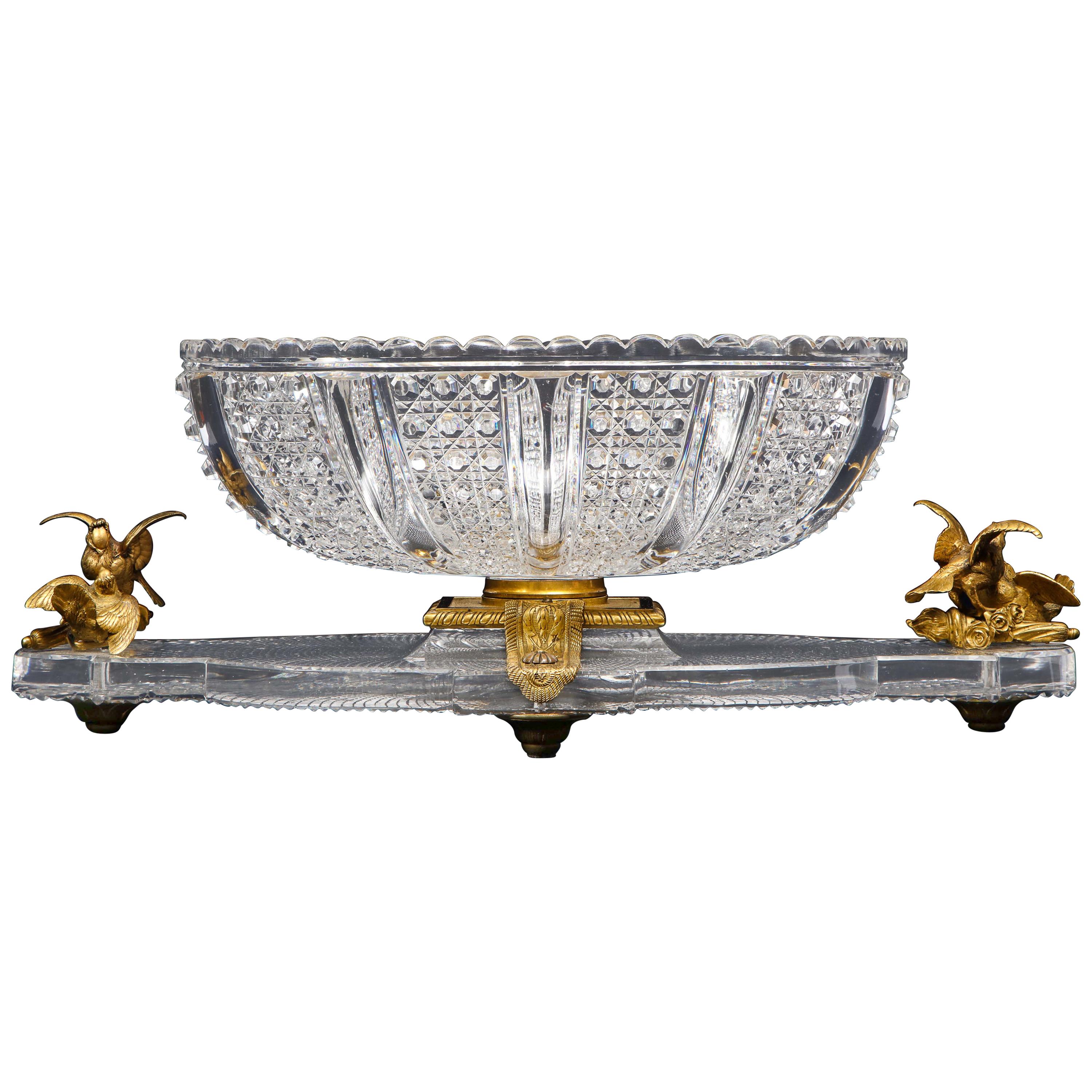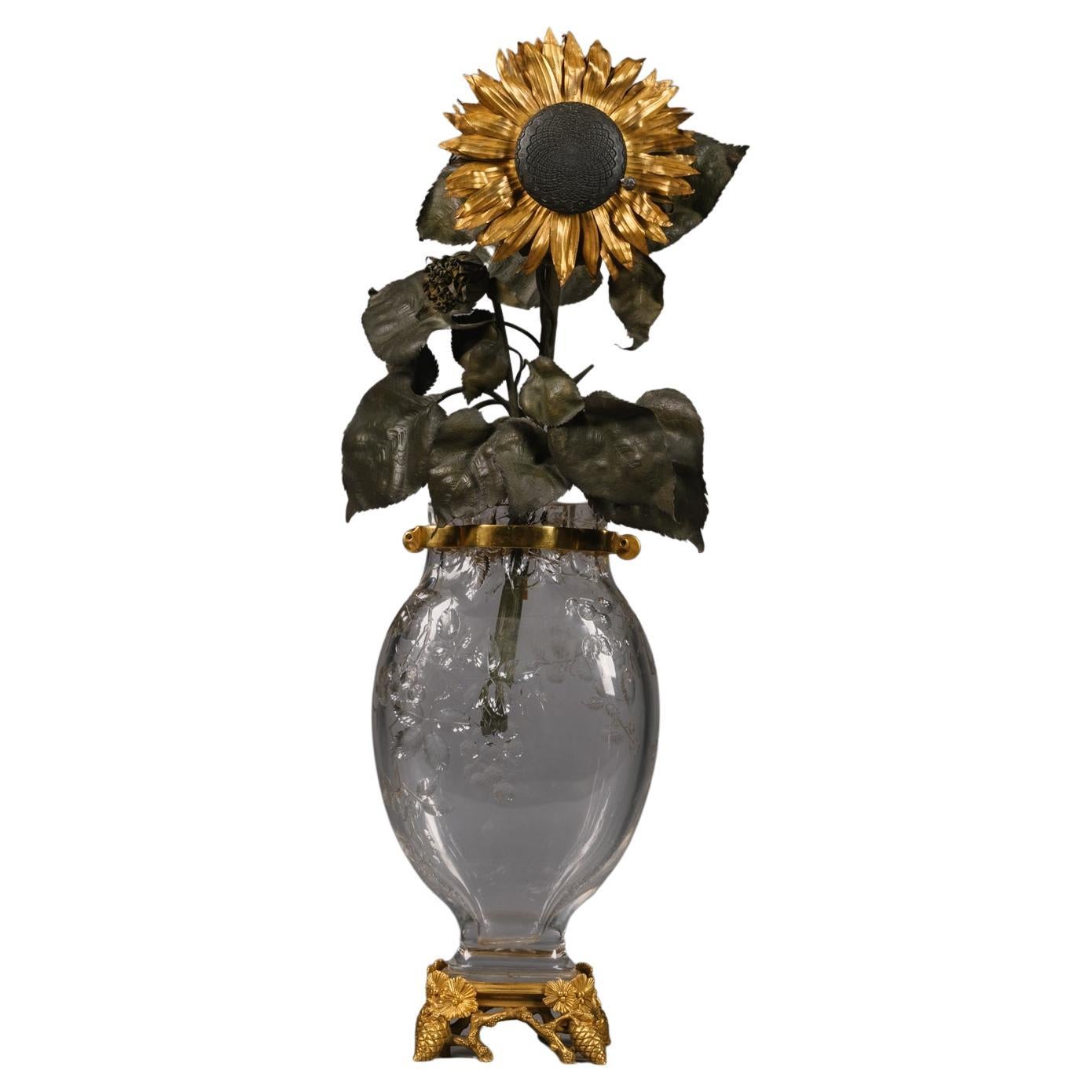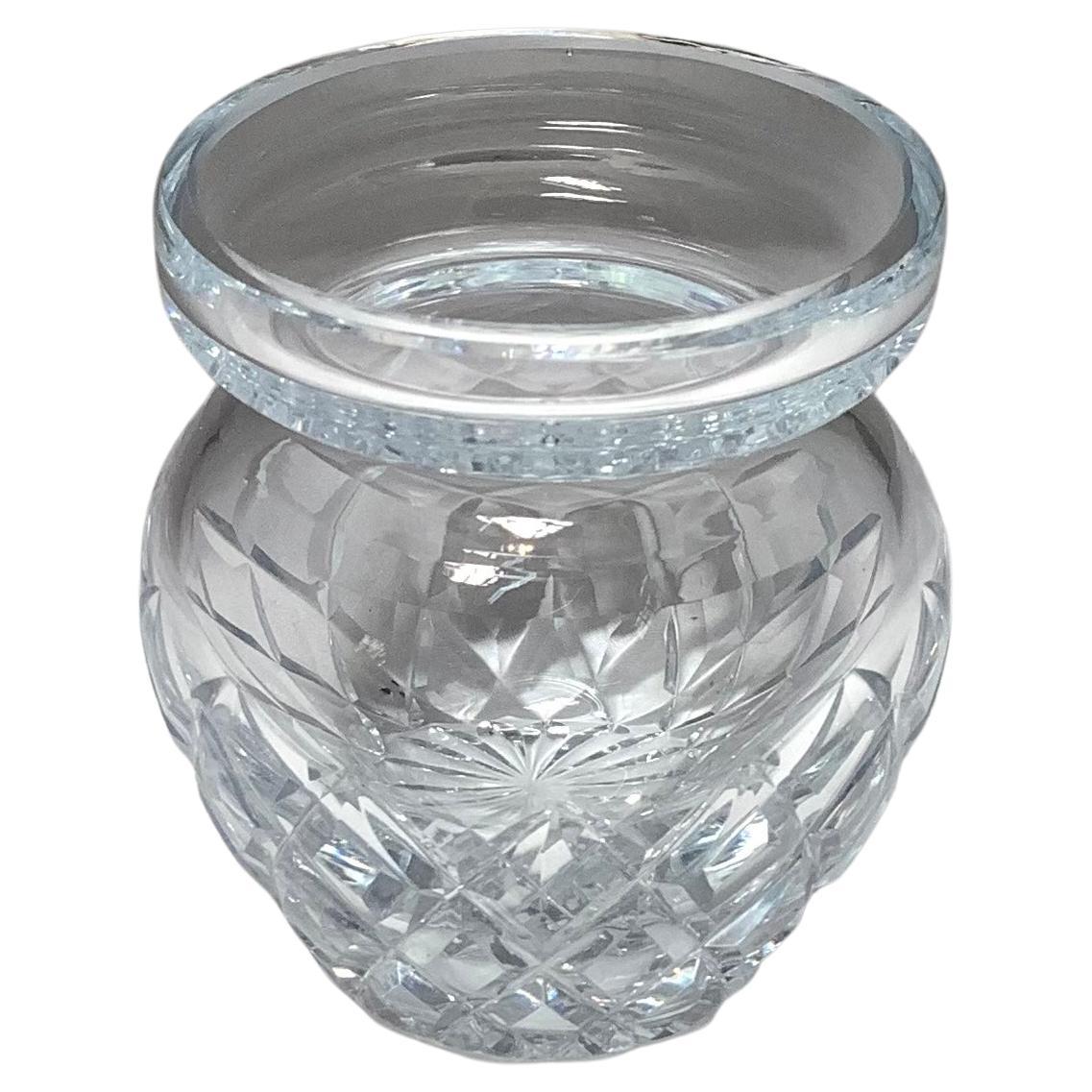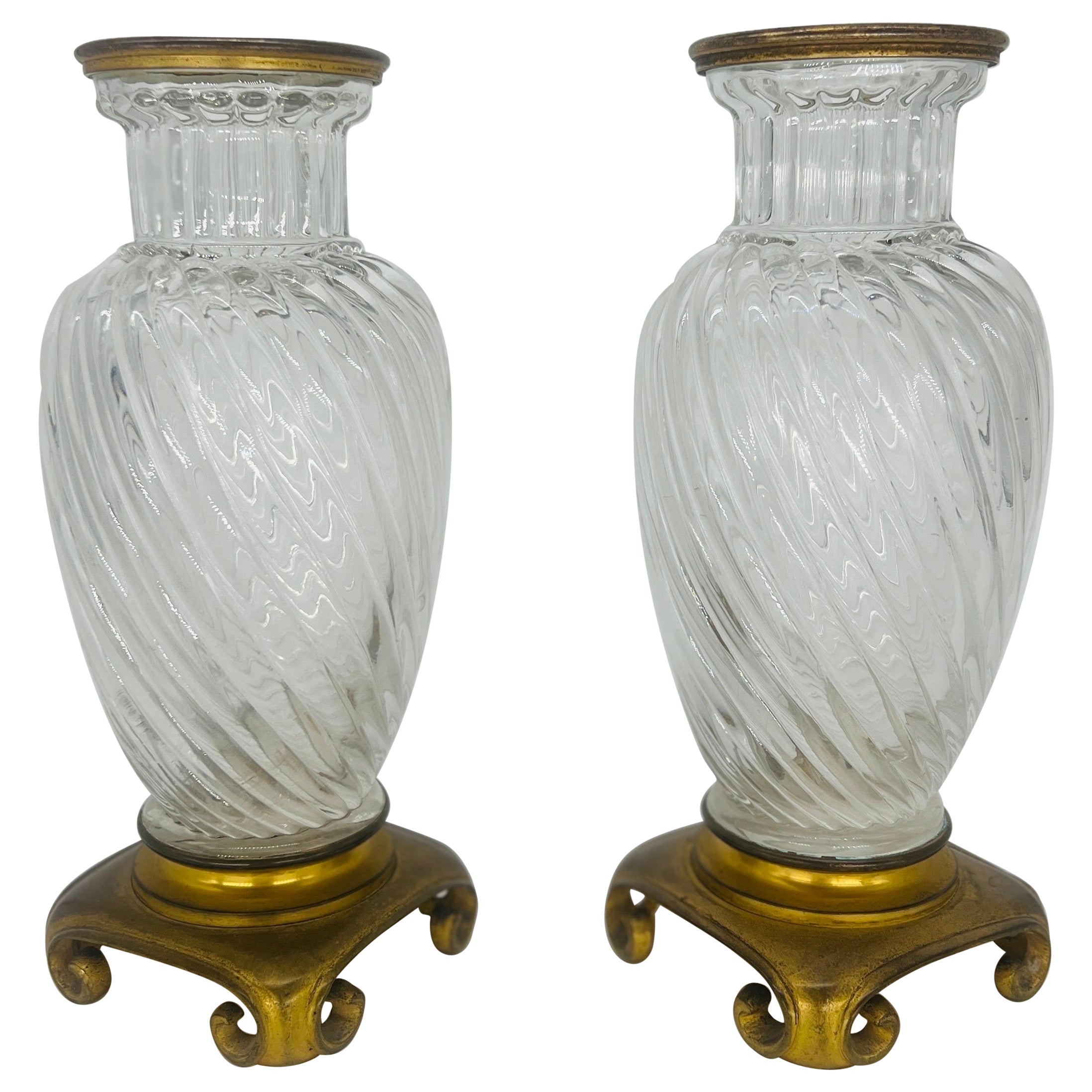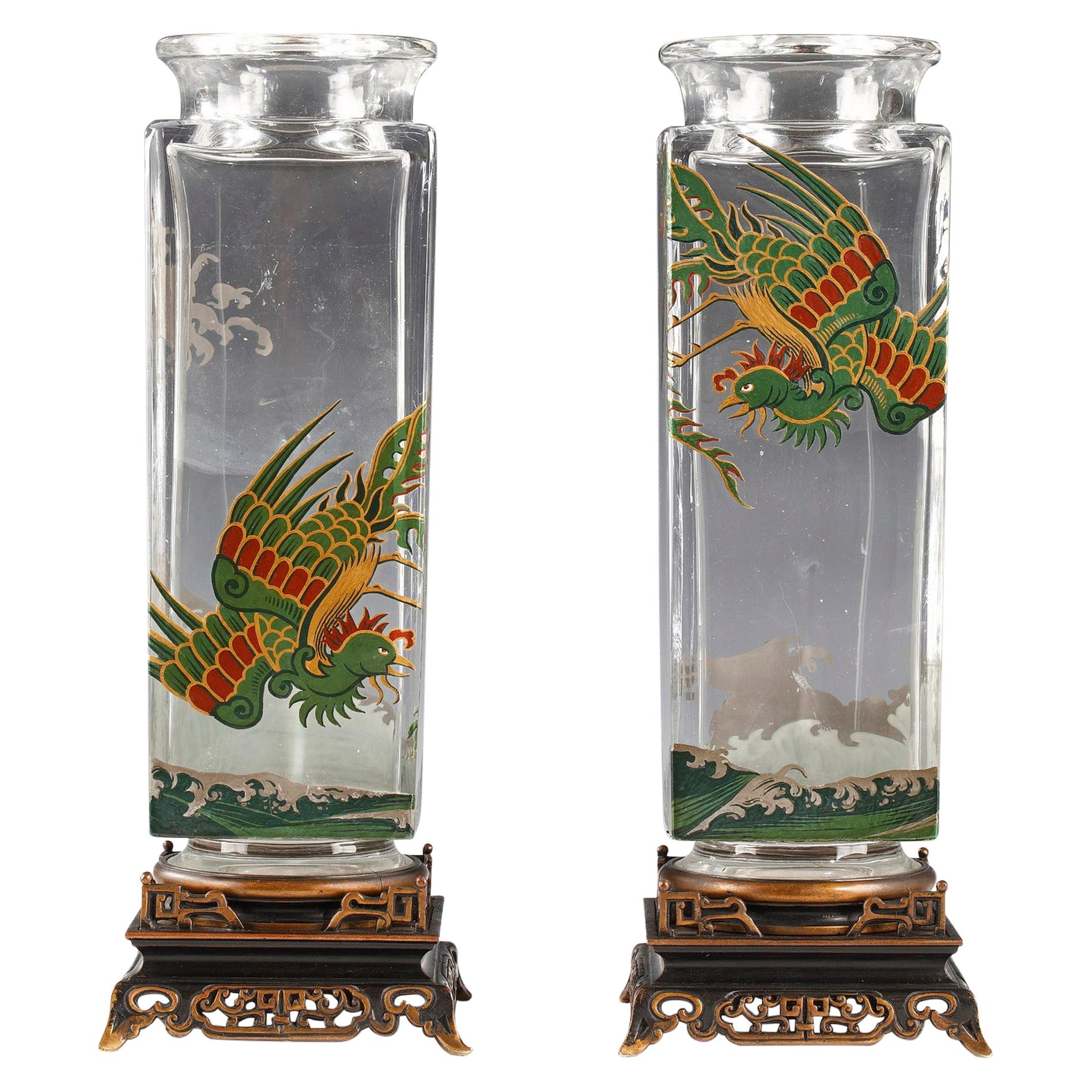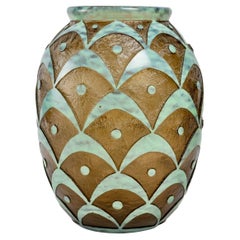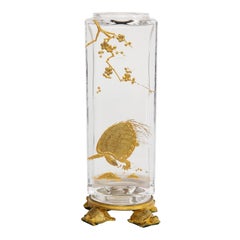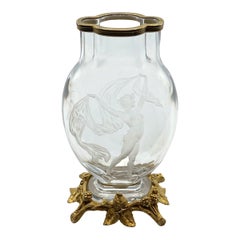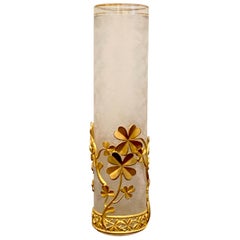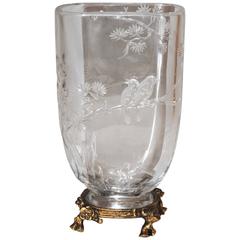
Japonisme Cutted Crystal Vase Attributed to Maison Baccarat with Ormolu Mount
View Similar Items
Want more images or videos?
Request additional images or videos from the seller
1 of 10
Japonisme Cutted Crystal Vase Attributed to Maison Baccarat with Ormolu Mount
About the Item
- Attributed to:Baccarat (Manufacturer)
- Dimensions:Height: 7.09 in (18 cm)Width: 3.94 in (10 cm)Depth: 2.37 in (6 cm)
- Style:Japonisme (Of the Period)
- Materials and Techniques:
- Place of Origin:
- Period:
- Date of Manufacture:circa 1880
- Condition:
- Seller Location:Saint-Ouen, FR
- Reference Number:1stDibs: LU261237098213
About the Seller
4.9
Vetted Seller
These experienced sellers undergo a comprehensive evaluation by our team of in-house experts.
1stDibs seller since 2017
57 sales on 1stDibs
Typical response time: 1 hour
More From This SellerView All
- French Japonisme Lacquered Metal Jardinière on Ormolu Stand Signed MarnyhacBy Edouard Lievre, Maison Marnyhac 1Located in Saint-Ouen, FRJardinière Médicis vase shape in copper with gold lacquered decoration on a burgundy background of a Japanese landscape with a volcano and an eagle ...Category
Antique 1870s French Japonisme Planters, Cachepots and Jardinières
MaterialsMetal, Bronze
$18,400 Sale Price20% Off - A Théodore Deck (1823-1891) Enamelled Faience Soliflore Vase circa 1875By Theodore DeckLocated in Saint-Ouen, FRThéodore DECK (1823-1891) A polychromatic enamelled earthenware soliflore and quadrangular shape vase with Sino-Japanese inspiration design of flowers and geometrical friezes all around. Impressed uppercase mark "TH.DECK" under the base. Circa 1875 Born in Guebwiller in Alsace, Théodore Deck trained as a ceramist in his home region, then in Germany. He went into partnership with his brother, Xavier Deck, to create his own factory in Paris in 1858. At the Exhibition of Industrial Arts in 1864, he presented pieces covered with transparent enamels that were not cracked, and then made his first attempts at reliefs under transparent enamels. He developed a bright turquoise color, famously renowned as "Bleu Deck". It is this nuance that we find on the salamander represented on this vase. In 1887 he published a treatise entitled "La Faïence", in which he explained some of his discoveries. That same year, he became director of the Manufacture de Sèvres. Theodore Deck (1823-1891) is a French ceramist born in Guebwiller in Alsace. He is passionate about chemistry and the physical sciences. In 1841, he joined the master stove maker Hügelin father as an apprentice in Strasbourg. In two years, he learned of the methods inherited from the 16th century, such as the encrustation of colored pastes in the style of Saint-Porchaire. This apprenticeship did not prevent him from spending his free time draw-ing or modeling clay in the studio of sculptor André Friederich. Escaping military service, he made a tour of Germany as is the tradition with fellow Alsatian stove-makers. The quality of his work allows him to obtain important orders in Austria for the castles of the provinces and the imperial palaces, in particular for the palace of Schönbrunn. He continues his journey in Hungary to Pest, to Prague, then, going north through Dresden, Leipzig, Berlin and Hamburg. On the strength of his apprenticeship, he arrived in Paris in 1847. Recommended by Hügelin, he went to the stove factory of the Bavarian potter Vogt, located rue de la Roquette. The Revolution of 1848 interrupts production and Deck decides to return to his hometown. His family then advised him to set up a small terracotta workshop: he made a few busts, statuettes, vases, lamps and copies of famous antiques there. Aware that this situation would not allow him to provide for himself properly, he returned to Paris in 1851 where he was employed by the widow Dumas, daughter of the earthenware maker Vogt for whom he had worked. Hired as a foreman, he supplied the drawings and models to the workers, while working the land himself. The following year, he made the decision to settle not far from his former employer at 20, rue de la Fontaine-au-Roi, probably using his ovens. His brother, Xavier Deck, joins him. It was officially in 1858 that the Deck brothers created their business and settled in Paris at 46, boulevard Saint-Jacques. Initially, the brothers only carry out coatings for stoves. But the business is going so well that barely a year after their installation, they want to diversify their production and engage in ceramics for the cladding of buildings as well as in shaped parts. Deck is interested in politics. In 1870, he opted for French nationality and was elect-ed deputy mayor in the 15th arrondissement of Paris. In 1861, at the Salon des arts et industries de Paris, which was held on the Champs-Élysées, Théodore Deck exhibited his works for the first time: these were pieces with an inlay decoration called “Henri II” and others. pieces covered with turquoise blue enamel or decoration in the style of Iznik ceramics.If he wins a silver medal, reviews are mixed, however. The following year, on the occasion of the Universal Exhibition of 1862 in London, he won over English customers. He surprised by presenting, like the previous year, his Alhambra Vase...Category
Antique 1870s French Japonisme Vases
MaterialsFaience
$4,771 Sale Price30% Off - Daum Art Deco Smoky Glass 'Peacock Feather' VaseBy DaumLocated in Saint-Ouen, FRA Daum Art Deco smoky glass 'Peacock Feather' vase, circa 1925, Engraved Daum Nançy, France with cross of Lorraine With mottled and polished flashing, deeply acid-etched. Daum is ...Category
Vintage 1920s French Art Deco Vases
MaterialsBlown Glass
$13,193 Sale Price20% Off - A Daum Art Deco Acid-Etched Glass Vase, circa 1930By DaumLocated in Saint-Ouen, FR"Parrots" A Daum Nançy France Art Deco Acid-etched Glass Vase, circa 1930 Large Cameo and overlaid glass vase, decorated with parrots. Etched to foot rim DAUM NANCY FRANCE with Cross...Category
Vintage 1920s French Art Deco Glass
MaterialsArt Glass
- Daum Art Deco Acid-Etched Glass Vase, circa 1930By DaumLocated in Saint-Ouen, FRA Daum Nançy Art Deco acid-etched deep green glass vase, circa 1930 Rare and important vase «aux biches» in thick glass tinted green with decoration in relief with acid Signed «Dau...Category
Vintage 1920s French Art Deco Glass
MaterialsArt Glass
$14,512 Sale Price20% Off - “Wheat ears and poppies" Daum Nancy Glass Vase, circa 1898By DaumLocated in Saint-Ouen, FR“Wheat ears and poppies" DAUM Nancy Vase A "Wheat ears and poppies" multilayer glass vase by Daum - Nancy With an etched and polychromatic enameled decor with gold highlights on an...Category
Antique 1890s French Art Nouveau Glass
MaterialsArt Glass
You May Also Like
- French Japonisme Ormolu-Mounted Baccarat Crystal Vase with Bronze Turtle FeetBy Cristalleries De BaccaratLocated in New York, NYA Gorgeous and extremely rare French Japonisme ormolu-mounted turtle footed Baccarat crystal vase designed with a gilt turtle design, Baccarat stamp on bottom. The quality and craftsmanship of this piece is second to none. Baccarat crystal is known to be the best crystal in the world and this piece appropriately demonstrates that. The crystal vase is seated on four beautifully cast and hand-chiseled ormolu turtles, representing the Japanese artistic movement in France at the time, known as 'Japonisme'. The body of the vase is a gorgeously hand painted with raised gold and enamel decoration of a turtle and various other decorations, making it seem as though the turtle is swimming in a lake. Underneath the turtle are painted rocks and mosses, while above the turtle are cherry trees, dropping their fruit into the water. On the reverse of the main panel are two turtles swimming...Category
Antique 1880s French Japonisme Vases
MaterialsCrystal, Bronze
- Baccarat Attributed Crystal Gilded Silver Mounted Engraved VaseBy BaccaratLocated in New York, NYVery fine and rare 19 century French Baccarat attributed engraved crystal vase with with gilded silver mounts.Category
Antique 19th Century French Art Nouveau Vases
MaterialsCrystal, Sterling Silver
- Belle Epoque Baccarat Attributed Four-Leaf Clover Ormolu Mounted VaseBy BaccaratLocated in West Palm Beach, FLBelle Époque Baccarat (Attributed) four-leaf clover ormolu mounted vase, with typical gilt 'chipped ice' crystal mounted in a continuous frame of clo...Category
Early 20th Century French Belle Époque Vases
MaterialsCrystal, Ormolu
$556 Sale Price20% Off - Art Nouveau Baccarat Crystal Vase with Ormolu BaseBy BaccaratLocated in London, GBArt Nouveau Baccarat crystal vase with ormolu base French, c. 1905 Height 32cm, diameter 14cm This stunning Baccarat glass vase is accompanied by an intriguing ormolu base. The crys...Category
Early 20th Century French Art Nouveau Vases
MaterialsCrystal, Ormolu
- Hand-Diamond Cut Crystal & Ormolu Mounted Baccarat Centerpiece/Surtout de TableBy BaccaratLocated in New York, NYA magnificent museum quality French 19th century hand-diamond cut crystal and ormolu-mounted Baccarat centerpiece/surtout de table in the Louis XVI style. This is truly an exemplary piece. The crystal center bowl is all hand-diamond cut with illustrious detail. Two different patterns are found on the bowl, which includes a gorgeous octagonal raised crystal design adjacent to a fluted convex crystal design. Details are not skimped on the upper rim of the bowl, with a beautiful cut-crystal scalloped motif. The center bowl is mounted on a beautiful doré bronze square plinth with an embossed drape-like pattern flowing off either end of the plinth. On either end of the center bowl are two marvelously cast and embossed doré bronze love...Category
Antique 1870s French Louis XVI Centerpieces
MaterialsCrystal, Bronze
- Rare 'Japonisme' Cut-Crystal Glass Sunflower Clock by BaccaratBy Cristalleries De BaccaratLocated in Brighton, West Sussex'Pendule Fleur d'Hélianthe' - A Rare 'Japonisme' Cut-Crystal Glass, Gilt and Patinated Bronze Clock by Baccarat, Paris. Stamped 'Baccarat', The clock movement signed 'Planchon à P...Category
Antique 19th Century French Japonisme Table Clocks and Desk Clocks
MaterialsBronze, Ormolu
Recently Viewed
View AllMore Ways To Browse
Crystal Vase Bird
Baccarat Vase Mount
Crystal Vase With Birds
Baccarat Vase Ormolu
Baccarat Bird
Baccarat Crystal Bird
Baccarat Japonisme
Dark Green Glass Vases
Resin Fruit
Orange China Vase
Orange Chinese Vase
Purple Chinese Vases
Mid Century Italian Pottery Ceramic Vase
Large Antique Ceramic Vessel
Tiffany Studios Blue
Etched Glass Blue Vase
Antique Old Paris Vases
White Ceramic Bottle

